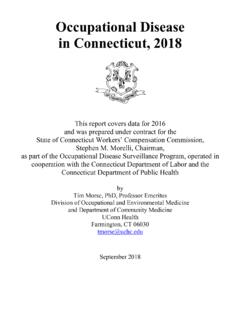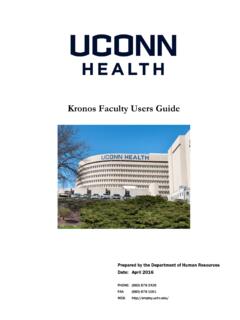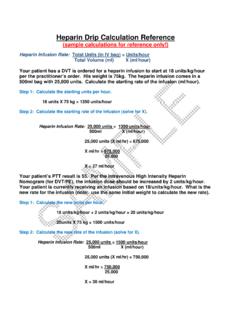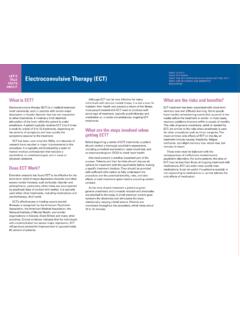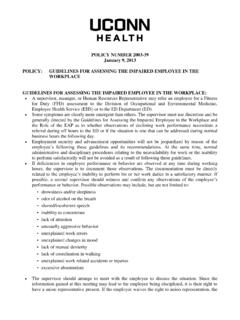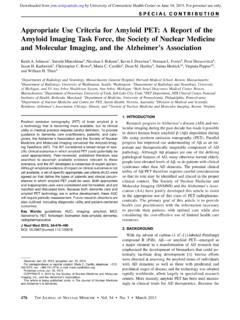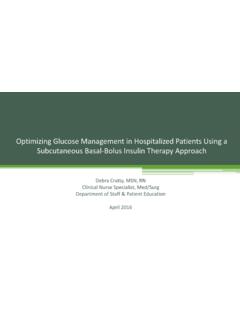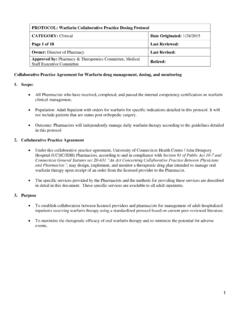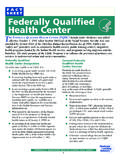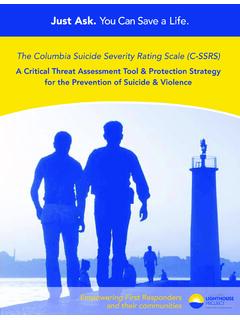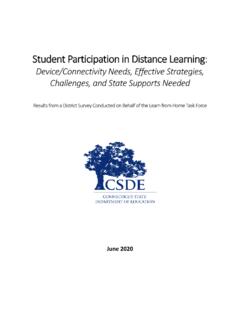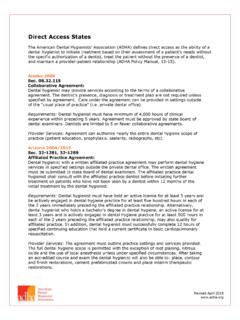Transcription of Clinical Procedure Suicide Risk Assessment and Intervention
1 Page 1 of 6 Clinical Procedure Suicide Risk Assessment and Intervention Title Suicide Risk Assessment and Intervention Policy Owner and Contact Information John Dempsey Hospital Administration 860-679-2422 Scope UConn health John Dempsey Hospital Emergency department and Inpatient Units Effective Date October 31, 2019 PURPOSE: To identify and assure safe handling of patients with potential for Suicide risk. POLICY: Suicide Risk Assessment and Intervention DEFINITIONS: Suicide : Death caused by self-directed injurious behavior with an intent to die as a result of the behavior. Suicide attempt: A non-fatal, self-directed, potentially injurious behavior with an intent to die as a result of the behavior; might not result in injury. Suicidal ideation: Thinking about, considering, or planning Suicide .
2 MATERIALS NEEDED: None PROCEDURES: EMERGENCY department Procedure The Registered Nurse (RN) in the ED will: 1. Initiate a 1:1 Observation of the patient if the patient s chief complaint is: a. Suicidal Ideation b. Homicidal Ideation c. Self-Injurious Behavior Page 2 of 6 2. Complete the Columbia Suicide Severity Rating Scale (C-SSRS) on every patient during triage. a. If the patient answers no to C-SSRS screening questions 1, 2 and 6, the patient is considered not at risk for Suicide at this time. b. If the patient answers yes to any of the C-SSRS screening questions the UConn health Suicide Assessment Algorithm (see Appendix link) will be followed and applicable interventions will be initiated. Determine risk of Suicide (low, moderate, high) based on the UConn health Suicide Assessment Algorithm and Supplement.
3 If the patient is found to be at no, low or moderate risk, the RN will rescreen a patient using the C-SSRS with a new occurrence of suicidal behavior, ideation, statement, or other noteworthy Clinical change. If the patient is found to be at low risk for Suicide the RN in the ED will: 1. Notify the ED Practitioner of both the risk and its level (low). Determine, in collaboration with the physician, the level observation appropriate for the patient. 2. Notify the Charge Nurse, Assistant Nurse Manager and/or Nurse Manager of the positive Suicide screening. 3. Conduct an environmental risk Assessment (see the UConn health Suicide Assessment Algorithm and Supplement) that identifies and removes/mitigates features in the physical environment that could potentially be used for harm. 4.
4 Document the plan to mitigate the risk for Suicide in the EMR. If the patient is found to be at moderate or high risk for Suicide the RN in the ED will: 1. Initiate a 1:1 level of observation. 2. Notify the ED Practitioner of both the risk for Suicide and its level (moderate, high). 3. Notify the Charge Nurse, Assistant Nurse Manager and/or Nurse Manager of the positive Suicide screening. 4. Conduct an environmental risk Assessment (see the UConn health Suicide Assessment Algorithm and Supplement) that identifies and removes/mitigates features in the physical environment that could potentially be used for harm. 5. Document the plan to mitigate the risk for Suicide in the EMR. If the patient is found to be at low risk for Suicide the ED Practitioner (s) will: 1. Assess the patient and document the following in the EMR: 2.
5 Level of Observation required, including justification. 3. If determined that a CO is sufficient for safety, the justification for a CO and its corresponding order. 4. Directly address suicidality in the treatment and discharge (if applicable) plan. Page 3 of 6 5. Provide for counseling and follow-up care upon discharge/release from hospital care. 6. Provide Suicide prevention information upon discharge/release from hospital care. If the patient is found to be at moderate or high risk for Suicide , the ED Practitioner (s) will: Assess the patient and document the following in the EMR: 1. An order for 1:1 Observation. 2. An order a ED Psychiatric Consult 3. An order for Suicide Precautions 4. Directly address suicidality in the treatment and discharge plan. 5. Provide for counseling and follow-up care upon discharge.
6 6. Provide Suicide prevention information upon discharge/release from hospital care. After an ED psychiatric consultation is initiated by the ED Practitioner, the consulting psychiatry practitioner (independently licensed Practitioner and/or resident on service/call) will: 1. Complete and document a complete psychiatric evaluation. 2. Document the level of observation required (1:1 vs. CO) and justification. 3. Review Plan of Care and recommend specific interventions to manage risk of harm to self or others. 4. Specific recommendations to manage risk of harm to self or others will be made. Psychiatry will follow the patient in the Emergency department . PROCEDURES INPATIENT UNITS The RN will screen the patient for Suicide using the C-SSRS if the patient has not already been screened during the current encounter.
7 1. If the patient answers no to C-SSRS screening questions 1, 2 and 6, the patient is considered not at risk for Suicide at this time. See above policy statement regarding rescreening. 2. If the patient answers yes to any of the C-SSRS screening questions the UConn health Suicide Assessment Algorithm (see Appendix link) will be followed and applicable interventions will be initiated. Determine the level of Suicide (low, moderate, high) based on the UConn health Suicide Assessment Algorithm and If the patient is found to be at no, low or moderate risk, the RN will rescreen a patient using the C-SSRS with a new occurrence of suicidal behavior, ideation, statement, or other noteworthy Clinical change. If the patient is found to be at low risk for Suicide the RN will: Page 4 of 6 1.
8 Notify the Covering Practitioner of both the risk and its level (low). Determine, in collaboration with the Covering Practitioner, the level observation appropriate for the patient. 2. Notify the Charge Nurse, Assistant Nurse Manager and/or Nurse Manager of the positive Suicide screening. 3. Conduct an environmental risk Assessment (see the UConn health Suicide Assessment Algorithm and Supplement) that identifies and removes/mitigates features in the physical environment that could potentially be used for harm. 4. Document the plan to mitigate the risk for Suicide in the EMR. If the patient is found to be at moderate or high risk for Suicide the RN will: 1. Initiate a 1:1 level of observation. 2. Notify the Covering Practitioner of both the risk for Suicide and its level (moderate, high).
9 3. Notify the Charge Nurse, Assistant Nurse Manager and/or Nurse Manager of the positive Suicide screening. 4. Conduct an environmental risk Assessment (see the UConn health Suicide Assessment Algorithm and Supplement) that identifies and removes/mitigates features in the physical environment that could potentially be used for harm. 5. Document the plan to mitigate the risk for Suicide in the EMR. If the patient is found to be at low risk for Suicide the Covering Practitioner will: Assess the patient and document the following in the EMR: 1. Level of Observation required, including justification. 2. If determined that a CO is sufficient for safety, the justification for a CO and its corresponding order. 3. Directly address suicidality in the treatment and discharge (if applicable) plan.
10 4. Provide for counseling and follow-up care upon discharge/release from hospital care. 5. Provide Suicide prevention information upon discharge/release from hospital care. If the patient is found to be at moderate or high risk for Suicide , the Covering Practitioner will: Assess the patient and document the following in the EMR: 1. An order for 1:1 Observation. 2. An order a Psychiatric Consult 3. An order for Suicide Precautions 4. Directly address suicidality in the treatment and discharge plan. Page 5 of 6 5. Provide Suicide prevention information upon discharge/release from hospital care. After a psychiatric consultation is initiated by the Covering Practitioner , the consulting psychiatry practitioner (independently licensed Practitioner and/or resident on service/call) will: 1.
